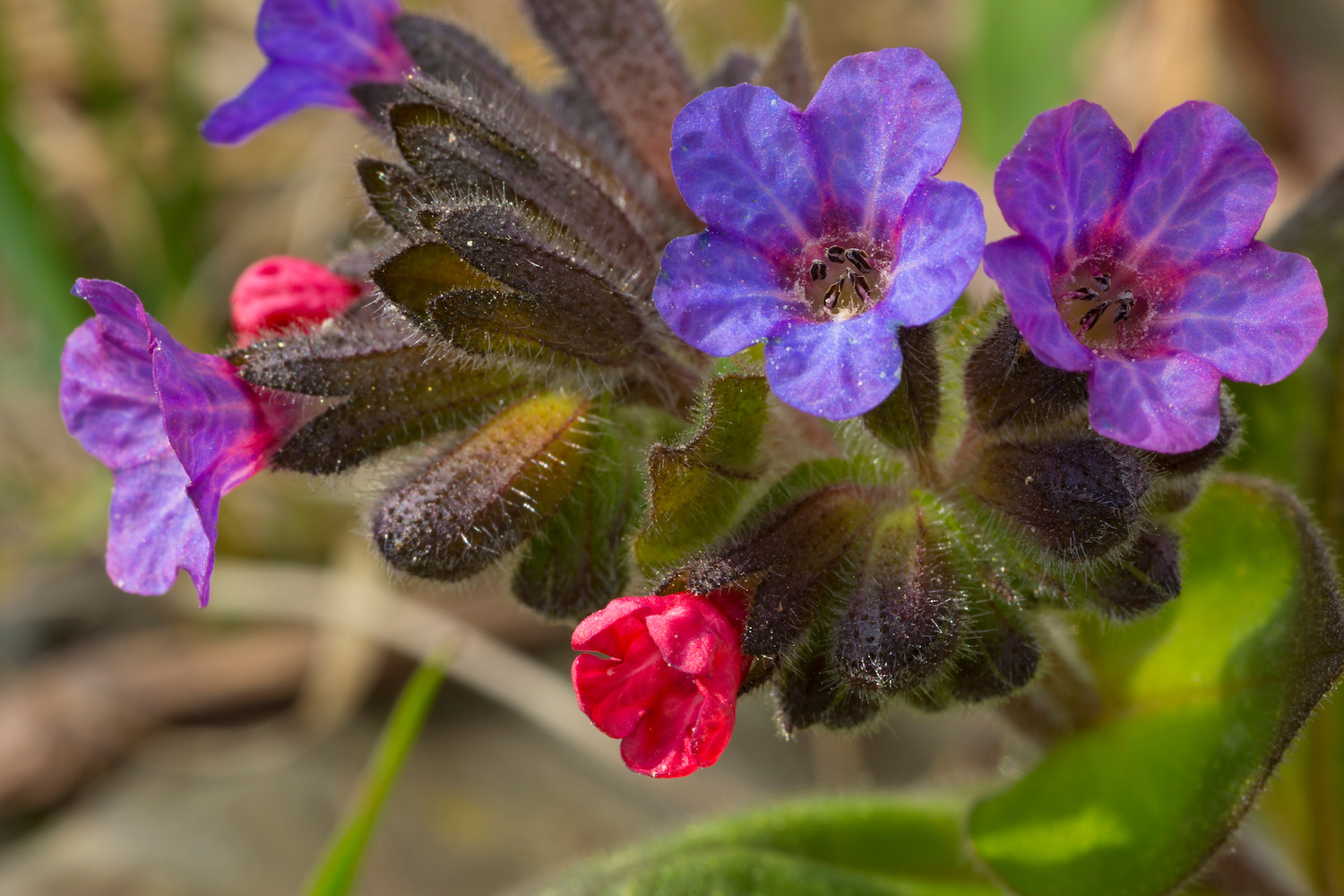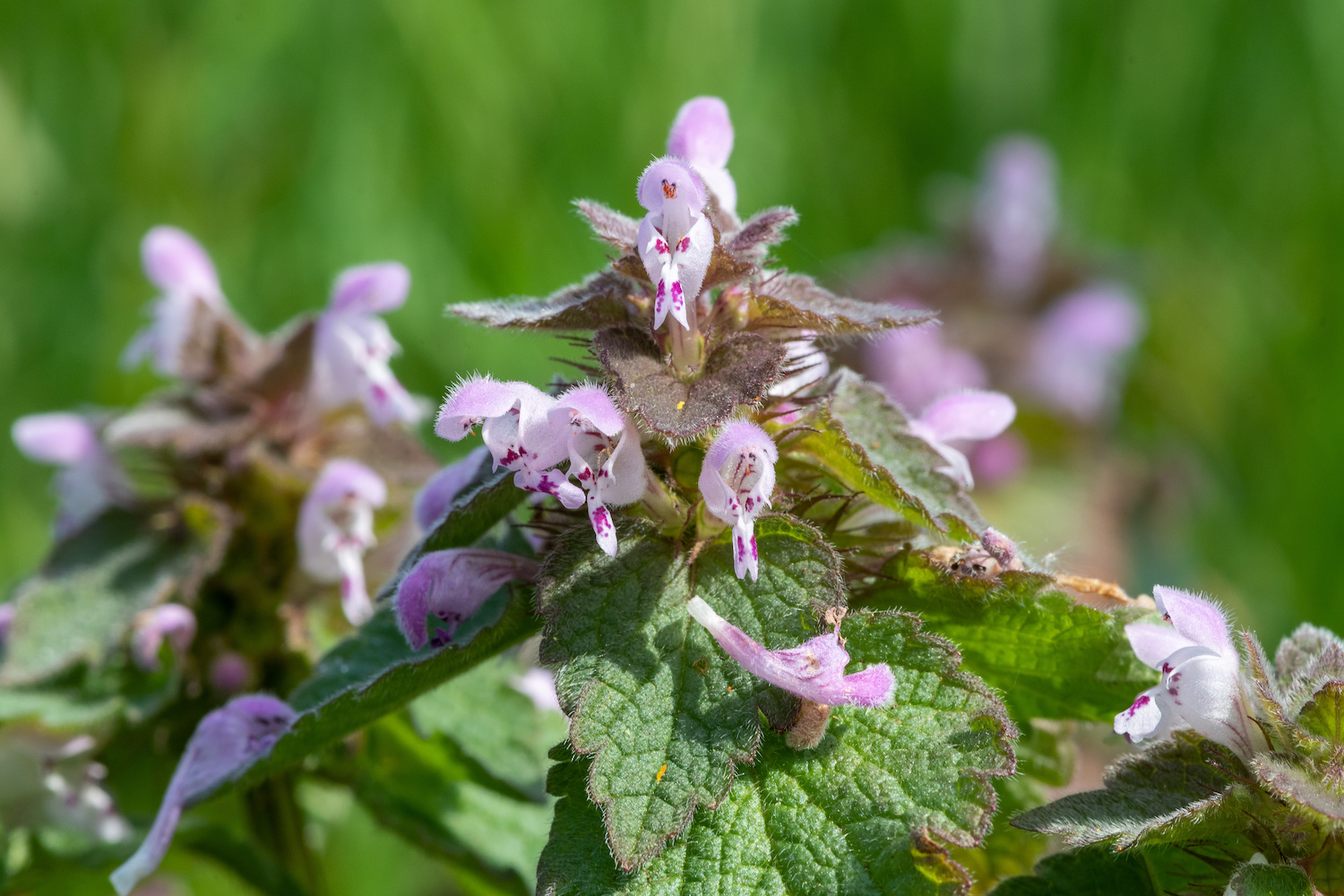
As we move into August, it seems the heat and drought is here to stay for a while, and the need for plants that can withstand these challenges is increasing. For those with shady gardens, finding plants to cope with the combination of shade and dry conditions can seem difficult, but there are a number of perennials that, once established, do well under such circumstances.
Dead Nettle (Lamium)
This low growing member of the mint family makes mounding ground cover, and often has variegated foliage in shades of green and gold or white. While it is most vigorous in moist, well-draining soil, it can cope well with dry conditions. It blooms in spring with flowers that range in color from white through shades of pink to purple.

Lungwort (Pulmonaria)
This spring-blooming plant has stalks of bell-shaped flowers in shades of pink, purple and blue, sometimes all in succession on one plant. It forms neat rosettes of attractively speckled and patterned leaves, which have a rough, hairy texture. Happiest when experiencing morning sun and soil that doesn’t dry out, it can cope admirably with drought and will go dormant for a while if summer conditions are dry for a prolonged period. Once things improve it will perk up and flush out new leaves until winter comes.

Lily of the Valley (Convallaria majalis)
This old-fashioned, cottage garden plant is known for its small, white scented flowers. It is a low-growing perennial and is extremely tolerant of less than ideal conditions, which come with growing under the canopy of trees. Even in the toughest of circumstances it will make dense ground cover, and with time will cover a considerable area. It also has the advantage of being deer and rabbit resistant.
Lenten and Christmas Roses (Helleborus orientalis and niger)
Hellebores, whether the late winter-blooming Christmas rose, or the spring-blooming Lenten rose, offer attractive patterned leaves which are evergreen in all but the harshest winters. These tough leaves help when it comes to coping with drought, and while their preference is for a moist, well-draining soil, they are adapted to dry spells, being particularly happy under deciduous trees. Their flowers range in color from white, lemon and green, through shades of pink and red, and are a welcome sight at a time when little else is blooming.
White Wood Aster (Eurybia divaricata)
Another plant adapted to dry shade is our native white wood aster. While it is a common sight in fall in woodland locations, it also has value in cultivated landscapes where its white flowers bring welcome color to shade gardens. It grows between 1.5-3’ tall and will make dense ground cover over time. It is attractive to a variety of pollinators, is a larval food source for pearl crescent butterflies, and its seeds are part of the diet of birds and small mammals.
Christmas Fern (Polystichum acrostichoides)
Getting its common name due to its evergreen foliage, this is a handsome clumping fern producing fronds 1-2’ tall. Intolerant of prolonged wet conditions, which will cause its crown to rot, it can cope well with dryness. As well as providing year-round ground cover this native fern is also deer resistant.
Other perennials that can cope with dry shade include English ivy (hedera helix), Hostas (particularly the more leathery, blue-leafed varieties), Bishop’s Hat (epimedium), Pigsqueak (bergenia), Bugleweed (ajuga), Yellow Archangel (Lamiastrum galeobolon), Lilyturf (liriope muscari), Sweet Woodruff (galium odorata) and Japanese Spurge (pachysandra terminalis).
Sources:







